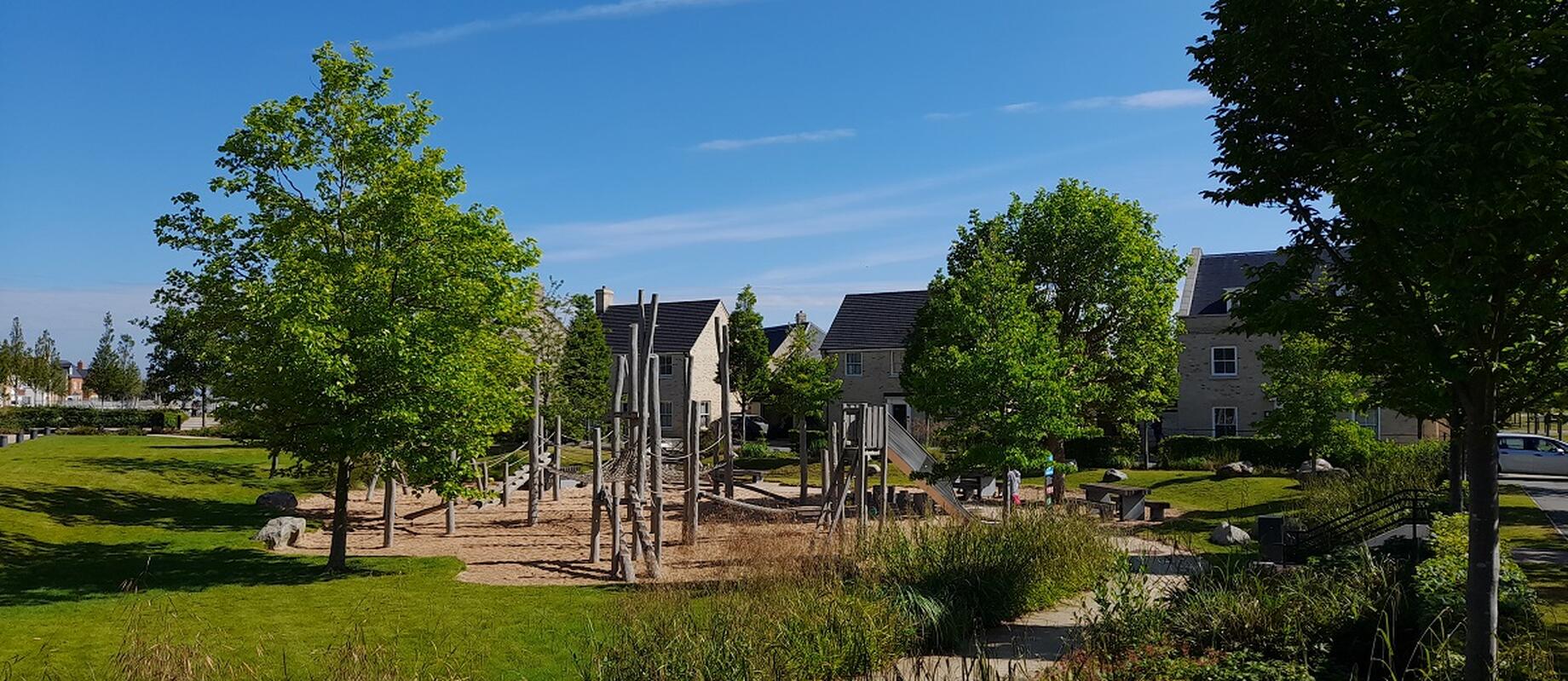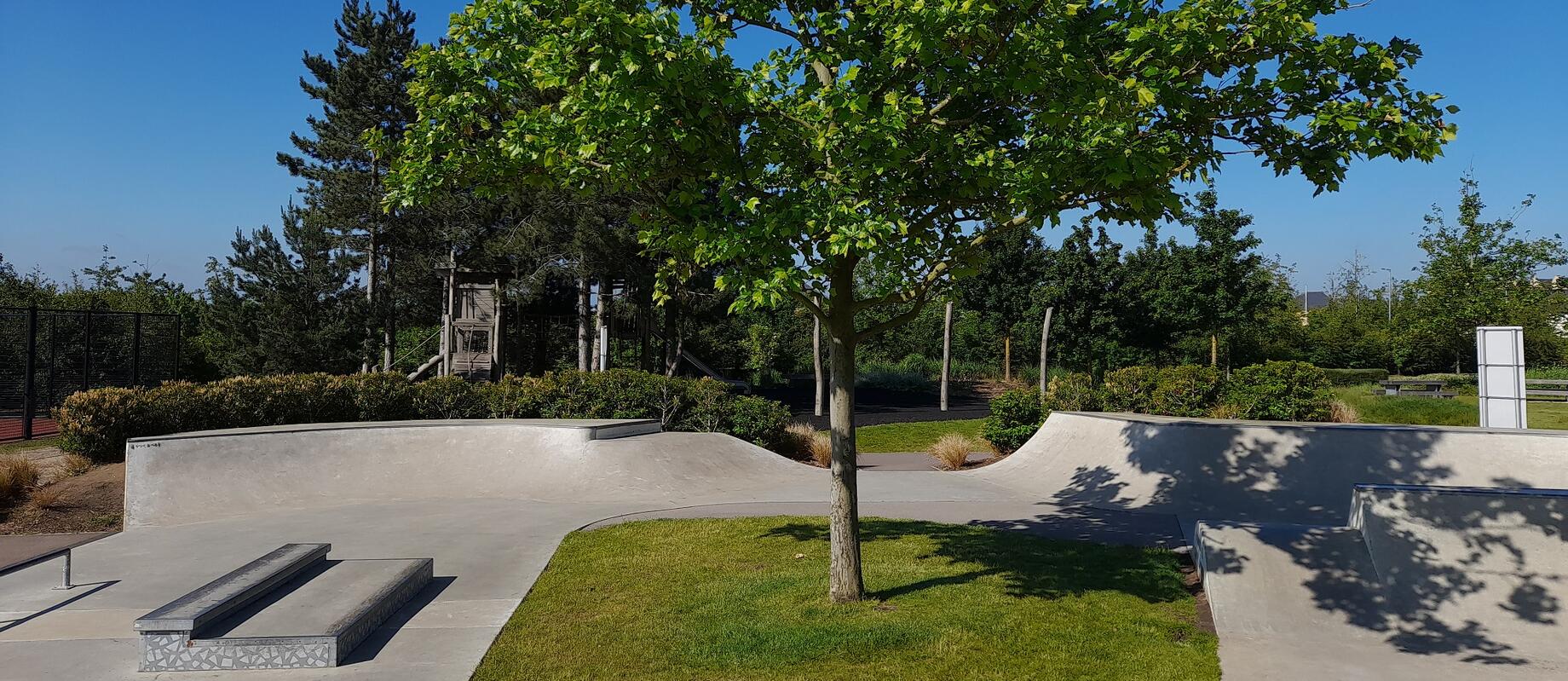Council budget cuts of more than £350 million are leading to a lack of safe and free places to play, according to an analysis released recently by The Guardian. With councils financially stretched across the board, it may feel like this picture is unlikely to change - but many of the communities we’re working with are bucking that trend.
In the analysis of outdoor play in England, local authority-run and funded play areas were highlighted as falling into disrepair. The picture felt bleak but experts noted that there was hope: in the shape of housebuilder-funded play parks. And that’s something we’ve seen become more and more popular, and successful, too.
ted that there was hope: in the shape of housebuilder-funded play parks. And that’s something we’ve seen become more and more popular, and successful, to.
Many of the communities we work with benefit from carefully designed play areas - called Local Areas for Play (LAPs), Local Equipment Areas for Play (LEAPs) and Neighbourhood Equipped Areas for Play (NEAPs).
Each type of play area provides different spaces, play equipment and facilities to accommodate play for babies right through to older children and young people. A LAP - for children under 6 years old - should be within a minute’s walk of a pedestrian route, a LEAP - ideal for children who are starting to go outside and play independently - within five minutes, and a NEAP - for older children, but with a mix of equipment for all ages - within 15 minutes.
That could mean toddler slides and swings in one play area through to a skate park, basketball court and open green space in another. The aim being that, whatever the age of a child, they have convenient access to a safe, outdoor area of play.
Whether it’s through using section 106 funds, or through other means, in our experience the initial creation of these play areas within new-build estates has been increasingly common. Although this is promising in creating a future where outdoor play is at the heart of childhood in England, in our view it’s just one piece of the puzzle.
Looking after our play spaces needs to be a priority too. And to make that happen, it needs to be properly funded.
Without proper maintenance play areas can quickly fall into disrepair. Play equipment needs routine safety checks (the communities we work with have play areas annually inspected by a RoSPA-accredited inspector), reactive maintenance inevitably needs to take place and landscaping needs to be taken care of. Without all of this, spaces become unusable.
With stretched budgets, local authorities are understandably reluctant to take on the maintenance of new infrastructure such as play areas - but that shouldn’t stop these vital spaces from being created. As Play England states in The Guardian’s article, “children’s mental health will suffer” if play provision isn’t invested into.
That’s where we’ve seen the resident management company model come into its own, along with estate charge funding.

Through initial developer funding and a resident-paid service charge, a maintenance plan can be created so play areas continue to be accessible, safe and an asset for the whole community. Families, new generations and wider communities can be welcomed to experience the benefits of access to outdoor space.
Where service charge funding is in place, proper management of these funds, and careful, diligent budgeting, should also create an adequate reserve fund for each community. A reserve fund is a proportion of all the service charge funds paid by residents. It is specially allocated to fund future maintenance works that are more costly, but less frequent, than regular, routine maintenance.
For example, a play area will need regular maintenance and landscaping to keep its condition safe, pleasant and usable for all. But eventually, in years to come, wear and tear will mean the play area needs to be replaced. A reserve fund will provide the funds for this to happen.
In fact, the thorough financial management of service charge funds, to create the likes of reserve funds, plays a huge role in the short and long-term outlook for community assets - making the future of spaces, like play parks, sustainable.
But it’s not a straightforward task. From pre-empting maintenance works, tendering for contracts that offer quality maintenance at competitive prices, ensuring insurances and regulatory requirements are met; through to scheduling an achievable maintenance schedule and budgeting for reserve funds and more, there’s a lot that goes into the financial management of community funds.
That’s why, at Encore, it’s a significant part of what we do. It’s a huge responsibility to make places better using the service charges residents have all paid, which is why we take great care over the financial management on behalf of communities we work with, ensuring that everything is compliant, sustainable and money is always carefully spent.
The maintenance of play areas offers a great example of this all in action - with a tangible benefit for the whole community.
